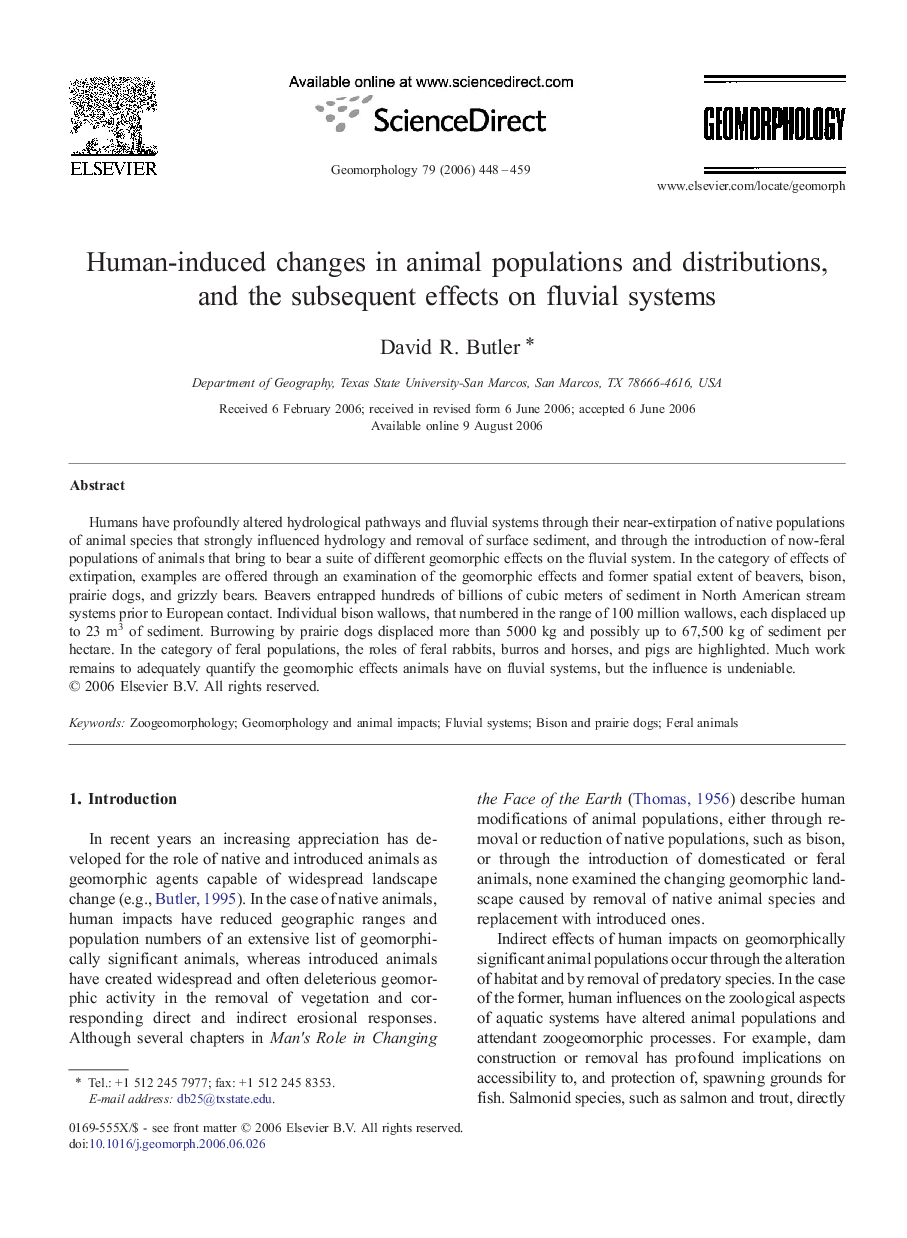| Article ID | Journal | Published Year | Pages | File Type |
|---|---|---|---|---|
| 4687495 | Geomorphology | 2006 | 12 Pages |
Humans have profoundly altered hydrological pathways and fluvial systems through their near-extirpation of native populations of animal species that strongly influenced hydrology and removal of surface sediment, and through the introduction of now-feral populations of animals that bring to bear a suite of different geomorphic effects on the fluvial system. In the category of effects of extirpation, examples are offered through an examination of the geomorphic effects and former spatial extent of beavers, bison, prairie dogs, and grizzly bears. Beavers entrapped hundreds of billions of cubic meters of sediment in North American stream systems prior to European contact. Individual bison wallows, that numbered in the range of 100 million wallows, each displaced up to 23 m3 of sediment. Burrowing by prairie dogs displaced more than 5000 kg and possibly up to 67,500 kg of sediment per hectare. In the category of feral populations, the roles of feral rabbits, burros and horses, and pigs are highlighted. Much work remains to adequately quantify the geomorphic effects animals have on fluvial systems, but the influence is undeniable.
